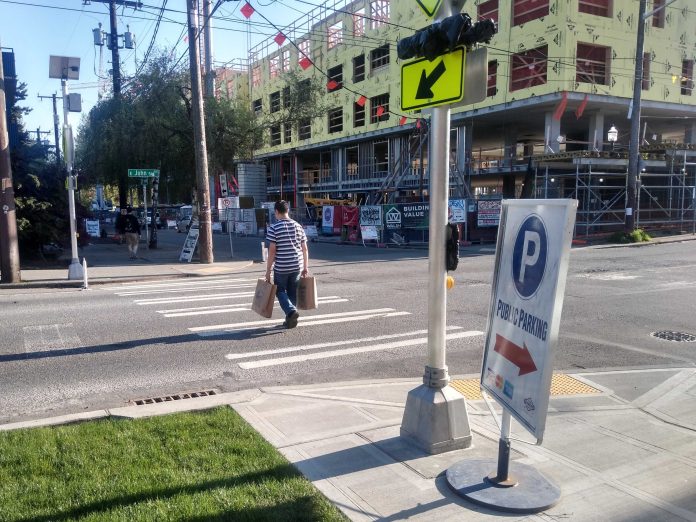Seattle’s largest safe streets grant program, the Neighborhood Street Fund, is currently in the voting stage. Voting is open through Sunday, May 5th, with anyone with any connection to Seattle able to cast a ballot in each of Seattle’s seven council districts. The NSF program allows neighbors to submit project ideas up to $1 million in scope to improve safety in their neighborhoods; this is the second round of NSF grant projects funded by the Move Seattle levy since 2015.
How did the projects that appear on the online ballot get selected? For the first time, project ranking occurred through an online portal where neighbors could essentially vote on projects in advance, rating them high or low priority. The same prioritization also occurred at several scantily-attended public meetings in February.
Natalie Bicknell laid out the potential problems with a voting-based grant system earlier during the project prioritization phase: with low participation, outcomes are heavily biased toward advantaged communities. With a council district-based cordoning of projects, wealthier communities are insulated from having their project funding go toward communities in need that are outside their district.
Further, in light of the new funding reality that the Durkan Administration has brought the Move Seattle levy into, spending money on individual grant-based safety projects rather than leveraging those funds to move forward more systematic projects that the Seattle Department of Transportation (SDOT) is leaving sitting on a shelf is itself pretty questionable.
SDOT is allocating around $8 million for all of the projects in this NSF grant cycle: this would be enough, for example, to close the gap in new sidewalk construction that has been created due to escalating project costs in that department. Twenty additional blocks of sidewalks would put Seattle back close to original commitment to fund 150 blocks of permanent sidewalks. And that’s just based on average project cost, so more could likely be funded if the department was targeted about the investment.
Even if your project gets through the NSF project process and could have a big impact on safety, there’s actually now precedent for that project not getting completed if there’s opposition from neighbors on “traffic impact” grounds. While SDOT has not officially announced that a safety project at 15th Ave S and S Columbian Way in Beacon Hill is not cancelled, the project has been on hold for over a year with no signs of it getting completed this year. The site of this project, adjacent to Mercer Middle School, sees the most school zone speed camera tickets in the entire city- 826 on average per month, only directly before and after school hours. Even that was not enough to override opposition.
That being said: if voting for projects is how they’re getting selected, it’s up to neighbors who care about street safety to assess the projects with that frame of reference and to ensure that turnout is as high as it could be.
After the votes are tallied, it’s still not over. From there, the top three projects as determined by votes will be sent to the Move Seattle Levy Oversight committee, a body that has demonstrated little actual hands-on oversight over the levy and its updated workplan. But it’s up to them to decide which of the three projects per district is worthy and to distribute any extra funds left over out of the project budget. (This paragraph was added after publication to clarify the process.)
Vote for your top five projects in each council district online through next Sunday.
Ryan Packer has been writing for The Urbanist since 2015, and currently reports full-time as Contributing Editor. Their beats are transportation, land use, public space, traffic safety, and obscure community meetings. Packer has also reported for other regional outlets including Capitol Hill Seattle, BikePortland, Seattle Met, and PubliCola. They live in the Capitol Hill neighborhood of Seattle.



